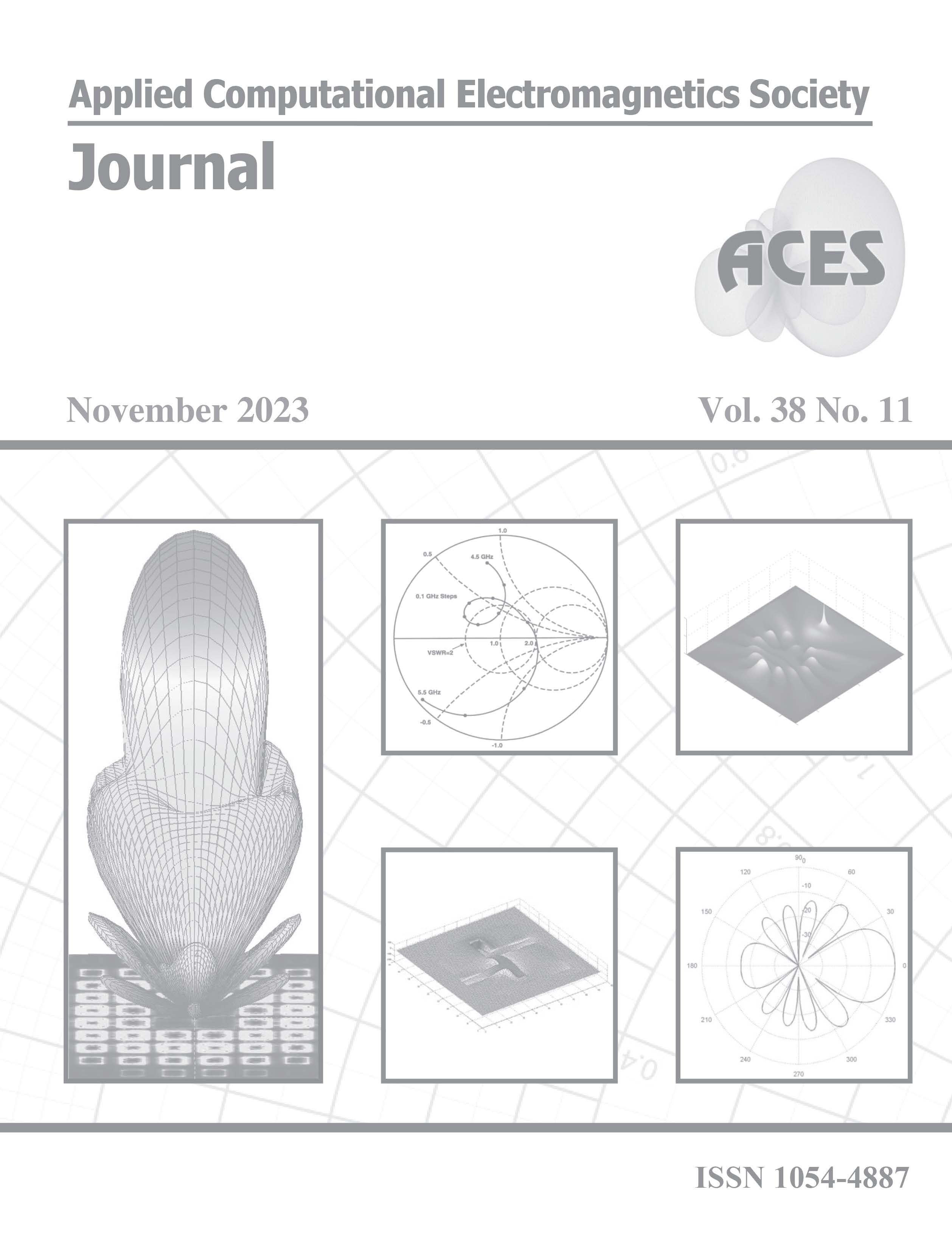Physics-informed Neural Networks for the Resolution of Analysis Problems in Electromagnetics
DOI:
https://doi.org/10.13052/2023.ACES.J.381102Keywords:
Direct and inverse electromagnetic problems, neural networks, physics informed neural networksAbstract
Learning from examples is the golden rule in the construction of behavioral models using neural networks (NN). When NN are trained to simulate physical equations, the tight enforcement of such laws is not guaranteed by the training process. In addition, there can be situations in which providing enough examples for a reliable training can be difficult, if not impossible. To alleviate these drawbacks of NN, recently a class of NN incorporating physical behavior has been proposed. Such NN are called “physics-informed neural networks” (PINN). In this contribution, their application to direct electromagnetic (EM) problems will be presented, and a formulation able to minimize an integral error will be introduced.
Downloads
References
A. Kovacs, L. Exl, A. Kornell, J. Fischbacher, M. Hovorka, M. Gusenbauer, L. Breth, H. Oezelt, D. Praetorius, D. Suess, and T. Schrefl, “Magnetostatic and micro magnetism with PINNs,” J. of Magnet. and Mag. Mat., vol. 548, 2022.
A. Khan and D. A. Lowther, “Physics informed neural networks for electromagnetic analysis,” IEEE Transactions on Magnetics, vol. 5, no. 9, 2022.
S. Barmada, P. Di Barba, A. Formisano, M. E. Mognaschi, and M. Tucci, “Learning inverse models from electromagnetic measurements data,” Proc. of IGTE Symp. 2022, Graz (Austria), Sep. 18-21, 2022.
M. Raissi, P. Perdikaris, and G. E. Karniadakis, “PINNs: A deep learning framework for solving forward and inverse problems involving nonlinear partial differential equations,” J. Comput. Phys., vol. 378, pp. 686707, 2019.
P. Rumuhalli, L. Udpa, and S. Udpa, “Finite element neural networks for elec. inverse problems,” Rev. Q. Nondestr. Eval., vol. 21, p. 28735, 2002.
W. Tang, T. Shan, X. Dang, M. Li, F. Yang, S. Xu, and J. Wu, “Study on Poissons equation solver based on deep learning technique,” 2017 IEEE El. Design of Adv. Pack. and Syst. Symp., Haining, China, 2018.
Z. Zhang, L. Zhang, Z. Sun, N. Erickson, R. From, and J. Fan, “Study on a Poissons equation solver based on deep learning technique,” Proc. of J. Int. Symp. on Elect. Compat., Sapporo, p. 305308, 2019.
B. Bartlett, “A generative model for computing electromagnetic field solutions,” Stanford CS229 Projects, 233 Stanford, CA, 2018.
J. Lim and D. Psaltis, “MaxwellNet: Physics-driven deep neural network training based on Maxwells equations,” APL Photonics, vol. 7, 2022.
Y. Chen, L. Lu, G. Karniadakis, and L. Negro, “Physics-informed neural net. for inv. problems in nano-optics and metamat,” vol. 28, no. 8, 2020.
L. Lu, R. Pestourie, W. Yao, Z. Wang, F. Verdugo, and S. Johnosn, “Physics-informed neural networks with hard constraints for inverse design,” J. Sci. Comput., vol. 43, no. 6, pp. B1105-B1132, 2021.
S. Wang, Z. Pend, and C. Christodoulou, “Physics-informed deep neural networks for transient electromagnetic analysis,” Antennas and Propagation, vol. 1, pp. 404-412, 2020.
M. Baldan, G. Baldan, and B. Nacke, “Solving 1D non-linear magneto quasi-static Maxwells equations using neural networks,” IET Sci. Meas. Technol., vol. 15, pp. 204217, 2021.
A. Kovacs, L. Exl, A. Kornell, J. Fischbacher, M. Hovorka, M. Gusenbauer, L. Breth, H. Oezelt, D. Praetorius, D. Suess, T. Schref, “Magnetost. and microm. with PINNs,” J. of Magnet. and Magnetic Materials, vol. 548, 2022.
A. Beltran-Pulido, I. Bilionis, and D. Aliprantis, ”PINNs for Solving Parametric Magnetostatic Problems,” IEEE Trans. Energy Conversion, 2022.
M. Baldan, P. Di Barba, and D. A. Lowther, “Physics-informed neural networks for solving inverse electromagnetic problems,” IEEE Trans. Magnetics, vol. 59, no. 5, 2023.
S. H. Rudy, S. L. Brunton, J. L. Proctor, and J. N. Kutz, “Data-driven discovery of partial differential equations,” Sci. Adv., vol. 3, no. 4, Art. no. e1602614, 2017.
Z. Long, Y. Lu, X. Ma, and B. Dong, “PDE-Net: Learning PDEs from data,” in Proc. 35th Int. Conf. Mach. Learn., pp. 3208-3216, 2018.
V. Dwivedi and B. Srinivasan, “Physics informed extreme learning machine (PIELM)—A rapid method for the numerical solution of partial,” Neurocomputing, vol. 391, pp. 96-118, 2020.
S. Mishra, “A machine learning framework for data driven acceleration of computations of differential equations,” Math. Eng., vol. 1, no. 1, pp. 118-146, 2018.
A. G. Baydin, B. A. Pearlmutter, A. A. Radul, and J. M. Siskind, “Automatic differentiation in machine learning: a survey,” J. of Machine Learning Res., vol. 18, no. 153, pp. 1-43, 2018.
O. C. Zienkiewicz and R. Taylor, The Finite Element Method (4th ed.), New York: McGraw-Hill Book Co., 1989.
COMSOL Multiphysics® v. 6.2. www.comsol.com. COMSOL AB, Stockholm, Sweden.




